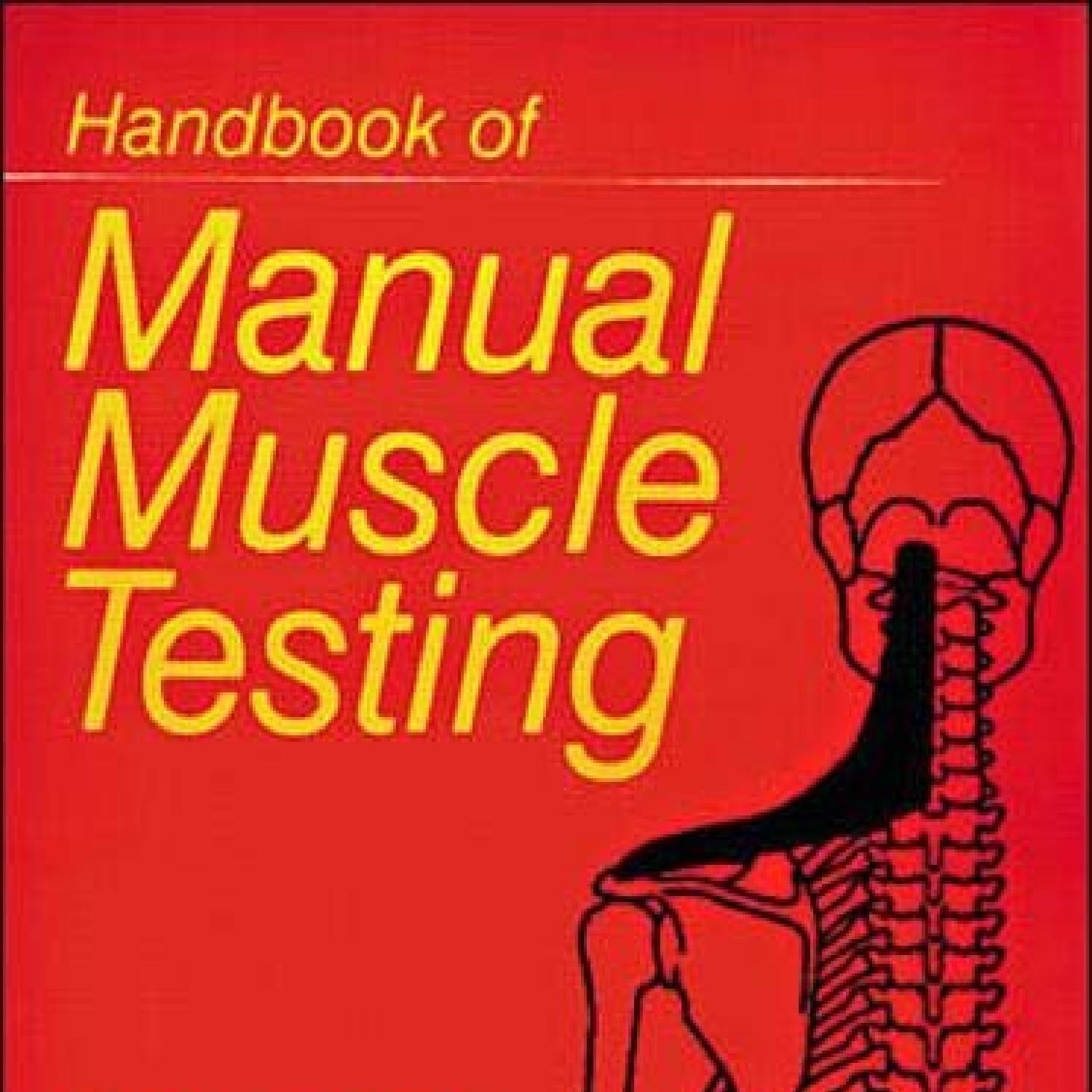Are you struggling to accurately diagnose and effectively treat your patients? Mastering Manual Muscle Testing is the key to unlocking a world of efficient and effective healthcare.
Many healthcare practitioners struggle with the limitations of traditional diagnostic methods and the lack of precision in treatment approaches. Mastering Manual Muscle Testing provides a comprehensive solution to these challenges, empowering you with the knowledge and skills to transform your practice.
Mastering Manual Muscle Testing: A Comprehensive Guide To Efficient Diagnosis And Effective Treatment
Mastering Manual Muscle Testing: A Comprehensive Guide To Efficient Diagnosis And Effective Treatment is the ultimate resource for healthcare professionals seeking to enhance their diagnostic and treatment capabilities. This guide provides a step-by-step approach to manual muscle testing, equipping you with the techniques and protocols necessary for accurate and reliable assessments.

Muscle Testing Upper Extremity – Source circuitwiringbosch.z19.web.core.windows.net
Personal Experience and Explanation
As a physical therapist, I have witnessed firsthand the transformative power of manual muscle testing. It has enabled me to identify muscle imbalances, assess postural dysfunctions, and formulate targeted treatment plans. The insights gained through manual muscle testing have empowered me to provide my patients with tailored and effective care, accelerating their recovery.
Beyond its practical applications, manual muscle testing also offers a deeper understanding of human movement and function. By assessing the strength, range of motion, and coordination of muscles, we gain valuable insights into the biomechanics of the body and its response to various stimuli.

Manual Muscle Testing Procedures 4 – KEY MMT- 8 is a set of 8 – Source www.studocu.com
History and Myths
The history of manual muscle testing is deeply rooted in ancient healing practices. Early physicians used their hands to assess muscle strength and identify imbalances. Over time, manual muscle testing has evolved into a standardized and scientific approach, with clear protocols and grading systems.
Despite its long history and scientific basis, manual muscle testing has been shrouded in myths and misconceptions. Some believe that it is subjective and unreliable, while others claim that it can diagnose specific diseases. Mastering Manual Muscle Testing dispels these myths and provides a clear understanding of the role and limitations of manual muscle testing.

Pharmaceutics | Free Full-Text | Current State of Breast Cancer – Source www.mdpi.com
Hidden Secrets
Mastering Manual Muscle Testing reveals the hidden secrets behind effective manual muscle testing. It teaches you how to interpret muscle responses, identify compensatory patterns, and differentiate between true weakness and pain inhibition.
By understanding the nuances of muscle testing, you can uncover hidden dysfunctions and gain deeper insights into your patients’ conditions. This knowledge empowers you to develop highly individualized treatment plans that address the root cause of their symptoms.

Manual Muscle Testing Guide for Occupational Therapy OT and – Etsy – Source www.etsy.com
Recommendations
Mastering Manual Muscle Testing is highly recommended for healthcare professionals who seek to elevate their diagnostic and treatment skills. It is an invaluable resource for:
- Physical therapists
- Chiropractors
- Osteopaths
- Massage therapists
- Sports medicine physicians
Whether you are a seasoned practitioner or just starting your journey, Mastering Manual Muscle Testing will provide you with the knowledge and tools necessary to transform your practice and improve patient outcomes.

MANUAL MUSCLE TESTING PROCEDURES – pdf download – Source www.docslides.com
Key Principles of Manual Muscle Testing
Mastering Manual Muscle Testing is built upon key principles that ensure accuracy and reliability:
- Standardization of techniques
- Objective grading systems
- Understanding of muscle function and biomechanics
- Interpretation of muscle responses
By adhering to these principles, practitioners can confidently perform manual muscle testing and derive meaningful insights from their assessments.

Mastering Manual Mode Photography Course – Etsy – Source www.etsy.com
Tips for Mastering Manual Muscle Testing
Mastering Manual Muscle Testing involves a combination of theoretical knowledge and practical skills. Here are some tips to help you excel:
- Thorough understanding of anatomy and biomechanics
- Regular practice with standardized techniques
- Calibration with experienced practitioners
- Attention to detail and observation of muscle responses
- Continuous learning and refinement of skills
By following these tips, you can develop proficiency in manual muscle testing and unlock the full potential of this diagnostic tool.

Cleaning Products & Environmental Toxicity | Saul Marcus, ND – Source saulmarcusnd.com
Assessment Protocols
Mastering Manual Muscle Testing provides comprehensive assessment protocols for a wide range of muscle groups. These protocols guide practitioners through the proper positioning, stabilization, and testing procedures for each muscle. By following these protocols, healthcare professionals can ensure accurate and reliable assessments.

BOOK Handbook of Manual Muscle Testing.pdf | DocDroid – Source www.docdroid.net
Fun Facts About Manual Muscle Testing
Here are some fun facts about manual muscle testing:
- It is estimated that manual muscle testing has been used for over 2,000 years.
- The first standardized manual muscle testing system was developed by Henry H. Kessler in the 1940s.
- Manual muscle testing is used in various settings, including sports medicine, rehabilitation, and research.
- Some studies suggest that manual muscle testing can be as reliable as electromyography (EMG) for assessing muscle strength.
These fun facts highlight the rich history and scientific basis of manual muscle testing.
How to Master Manual Muscle Testing
Mastering Manual Muscle Testing is a journey that requires dedication and practice. Here are some steps to guide you:
- Enroll in a certified manual muscle testing course.
- Practice regularly with standardized techniques.
- Seek feedback from experienced practitioners.
- Stay up-to-date with the latest research and techniques.
- Continuously refine your skills and knowledge.
By following these steps, you can become an expert in manual muscle testing and unlock the full potential of this powerful diagnostic tool.
What if Manual Muscle Testing is not Effective?
In rare cases, manual muscle testing may not be effective due to factors such as:
- Patient resistance or fear
- Cognitive or physical limitations of the patient
- Pain or discomfort during testing
- Improper technique or lack of experience
If manual muscle testing is not effective, alternative assessment methods may be necessary. Consultation with a specialist or further diagnostic testing may be warranted.
5 Ways Manual Muscle Testing Can Transform Your Practice
Mastering Manual Muscle Testing offers numerous benefits that can transform your practice:
- Enhanced diagnostic accuracy
- Tailored and effective treatment plans
- Reduced patient pain and discomfort
- Improved patient outcomes
- Increased professional satisfaction
By embracing this powerful tool, you can elevate the quality of your healthcare services and make a profound impact on your patients’ lives.
Question and Answer
-
Is manual muscle testing painful?
Manual muscle testing is generally not painful. However, some discomfort may be experienced if the muscle is particularly weak or injured.
-
How often should manual muscle testing be performed?
The frequency of manual muscle testing depends on the patient’s condition and treatment plan. Generally, it is recommended to perform manual muscle testing regularly to monitor progress and adjust treatment as needed.
-
Can manual muscle testing be used to diagnose specific diseases?
Manual muscle testing cannot diagnose specific diseases directly. However, it can provide valuable insights into muscle function and help identify underlying muscular or neurological issues that may require further investigation.
-
Is manual muscle testing suitable for all patients?
Manual muscle testing is generally suitable for most patients, including children and older adults. However, it may not be appropriate for patients with severe cognitive or physical limitations.
Conclusion of Mastering Manual Muscle Testing: A Comprehensive Guide To Efficient Diagnosis And Effective Treatment
Mastering Manual Muscle Testing: A Comprehensive Guide To Efficient Diagnosis And Effective Treatment is an invaluable resource for healthcare professionals seeking to elevate their diagnostic and treatment capabilities. By mastering this powerful tool, you can gain a deeper understanding of human movement and function, identify hidden dysfunctions, and develop highly individualized treatment plans that improve patient outcomes.
Embrace the principles, tips, and recommendations outlined in this guide to unlock the full potential of manual muscle testing and transform your practice. Invest in your professional growth and witness the transformative impact on your patients’ lives.

